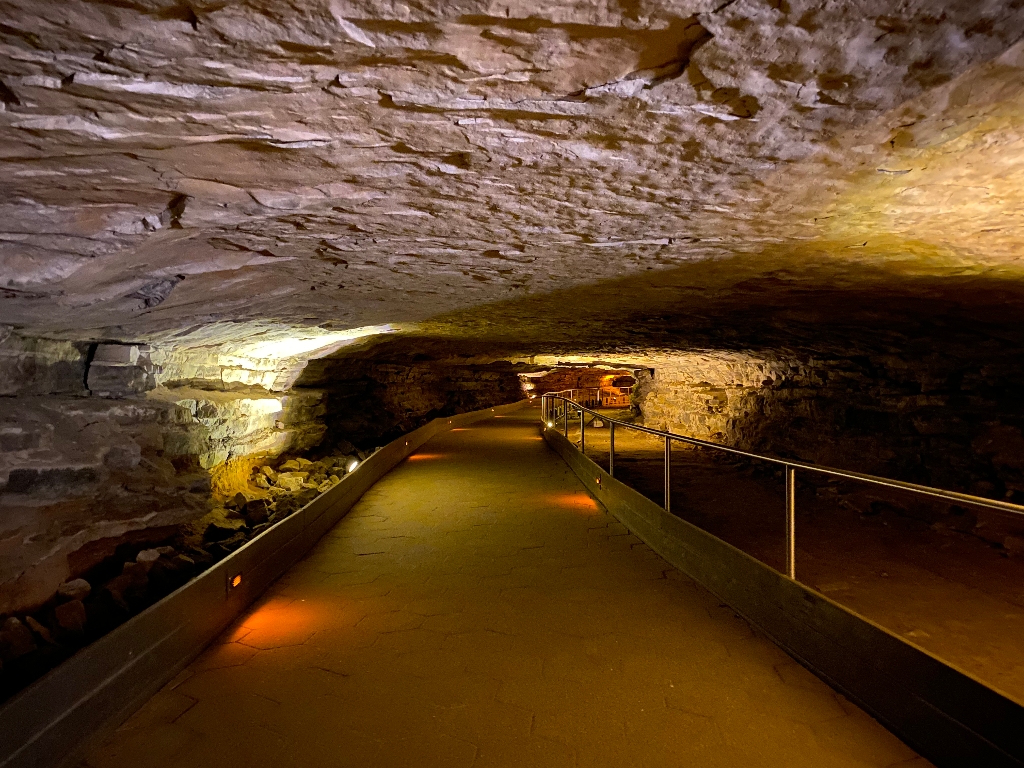
This section of the cave became known as “Houchin’s Narrows”, named for the legend of that young hunter. Along this path, also known as the twilight zone, light from the sun filters into the entrance. Here it is not uncommon to find surface dwelling animals and plants. Beyond this point very few living things from the surface can thrive in the darkness but we still find life in this extreme habitat. Cave scientists have identified 160 different species and they are still making new discoveries. Some species include eyeless cave fish, eyeless crayfish, pack rats, cave crickets, pseudo scorpions, various arachnids, cave beetles, and about twelve species of bats to name a few.
This passage has been slightly altered through the years as the use of the cave changed. Loose rocks and dirt have been removed to allow more room between the floor and the ceiling. On the side walls you can observe where the dirt level was at one point. The dirt floor on the right holds a clue for your next stop. There is a wood log half buried in the dirt... What purpose do you think this log had?
Is there something we missed for this itinerary?
Itineraries across USA


















































